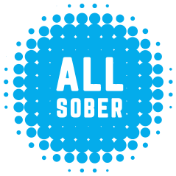What Is Medication-Assisted Treatment?
Everything you should know about medications used to treat opioid and alcohol use disorders

Medically assisted treatment (MAT) refers to the short-term use of medication therapy for alcohol and opioid use disorders. As outlined by the Substance Abuse and Mental Health Services Administration (SAMHSA), medication-assisted treatment used in combination with counseling and other behavioral therapies aims to provide a “whole patient” approach to the treatment of substance use disorders. Historically, medication was used in conjunction with counseling or therapy. In recent years, it can also serve as a standalone treatment when helping individuals who have opioid use disorder. MAT is sometimes referred to as medication-assisted recovery (MAR).
What Is Medication-Assisted Treatment?
The purpose of using these prescribed medications is to normalize brain chemistry while blocking the euphoric effects of alcohol and opioids. Medications can relieve the acute withdrawal symptoms associated with detox. In addition, medication can also relieve physiological cravings and normalize body functions as part of a longer-term treatment plan. Choosing to participate in medically assisted treatment is an individual decision that should be made after consulting with a physician and treatment provider.
Medication-Assisted Treatment for Opioid Use Disorder
As of 2020, there are three medications approved by the U.S. Food and Drug Administration (FDA) for the treatment of opioid use disorders. They are methadone, buprenorphine and naltrexone.
- Methadone: A synthetic agonist that eliminates withdrawal symptoms and relieves drug cravings as it binds to the same receptors in the brain as heroin and prescription painkillers. Methadone creates a less intense brain reaction and does not cause euphoria or symptoms of a high. Methadone must be administered with physician supervision and can only be dispensed through a SAMHSA-certified opioid treatment program.
- Buprenorphine/Naloxone (Suboxone): Buprenorphine is known as a partial agonist that partially binds to the same receptors but activates them less strongly than full agonists like heroin or methadone. It also has a “ceiling effect” so the opioid effects level off even with further dose increases thus reducing the risk of misuse, dependency and side effects. The naloxone component of this medication is a partial antagonist or “blocker.” If naloxone is injected into the bloodstream, it will cause someone who is opioid dependent to have uncomfortable withdrawal symptoms. This helps discourage IV drug users from injecting buprenorphine/naloxone. Unlike methadone, buprenorphine can be dispensed by certified healthcare providers in clinics, community hospitals, health departments and some correctional facilities, making this course of treatment more accessible.
- Naltrexone: An opioid antagonist which works by blocking opioid receptors and preventing euphoric effects. It prevents the euphoric and sedative effects of opioids, so if the individual relapses, they will not achieve the highs they aimed to achieve. Naltrexone may be prescribed by any healthcare provider and does not require special training like methadone or buprenorphine. Naltrexone is available in daily oral doses or as a long-acting injection.
Medication-Assisted Treatment for Alcohol Use Disorder
While there are some similarities in medications used to treat opioid use disorder, medications used for those with alcohol addiction are meant to treat the specific symptoms associated with long-term alcohol use.
- Naltrexone: An opioid antagonist that is prescribed as daily oral medication or monthly injection by any licensed physician or nurse practitioner. The medication serves to reduce cravings and block euphoric highs if alcohol is consumed. Naltrexone suppresses the euphoria and pleasurable sensations of alcohol, thus diminishing the rewards for consumption and making the continuation of use less likely.
- Disulfiram (Antabuse): A medication that helps reduce alcohol cravings by discouraging consumption. It works by causing adverse physical reactions if alcohol is consumed, and these unpleasant symptoms discourage people from drinking.
- Acamprosate: A prescribed oral medication that helps reduce alcohol cravings and helps alleviate some longer-acting symptoms of withdrawal such as anxiety and insomnia. Acamprosate does not produce an adverse effect if alcohol is consumed.
Medication-assisted treatment can work to help reduce substance consumption while individuals build a recovery plan as part of treatment. The medical support allows time for physical, neurological and emotional stabilization to take place.
More Help & Information
Sobriety vs. Recovery: What's the Difference?
Are the concepts themselves up for debate? Do they require certain treatments, or abstinence from everything? It's complicated! And new ways of thinking are changing the conversation.
Now Elite NFL Players, They First Tackled Addiction | News Roundup
All Sober compiles the best of the latest headlines. Here's your addiction and recovery news for the week of Feb. 19, 2024!
Help Them Help You: Explaining Your Mental Health to Your Family
Your mental health can affect — and be affected by — your loved ones. Here's how to discuss it with them so everyone can heal.
Dry January (and Beyond): The Possibilities Are Endless
There's never been a better time to go sober. Whether you're trying it out this month or already living the life, join us for some tips, ideas, inspiration — and maybe even new friends.
Sober Holiday Tips: Meeting 'Share-a-Thons'
Need to get out of the house for a bit and see some friendly sober faces? Recovery support group meeting marathons run 24/7 from Christmas Eve through New Year's Day.
What Happens After an Intervention?
Your loved one agreed to get treatment for addiction during their intervention — or not. Here's what you need to know about what comes next.
We're in This Together: Building a Healthy Sober Support Network
You are the captain of your recovery, but you don't have to do it alone. A sober support network will lift you up in tough times and celebrate your triumphs.
Real-Life Recovery Tips: Phone a Friend
When you're traveling, you can take your sober support network with you — right in your pocket. Rocker Kasim Sulton shares his top recovery tip in this video.











